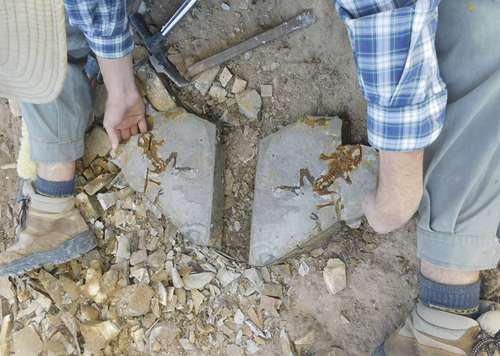Buenos Aires. Argentine scientists discovered the oldest tadpole in the world, which coexisted with dinosaurs in the Middle Jurassic 161 million years ago, a key paleontological find to understand the evolution of frogs and toads.
The excellent state of preservation of the fossil found in Argentine Patagonia allowed researchers to conclude that the morphology of the tadpoles has remained almost unchanged over the past 160 million years.
Not only is it a very important find due to its age, but it is also a unique tadpole due to the characteristics that were preserved in it.
Mariana Chuliver, researcher at the Azara Foundation and first author of the study published in the magazine, told Reuters Television. Nature.
The researcher added that the level of preservation of this specimen is extremely rare, since tadpoles, with their soft bodies, have little chance of fossilizing.
It has remains of soft tissues, such as nerves or eyes, but also a fundamental characteristic that was preserved is the hyobranchial skeleton. This means the cartilaginous skeleton that supports the gills of a tadpole. This is very important, since it allows us to know the diet and lifestyle of these organisms.
he detailed.
Scientists discovered the fossil, which measured 16 centimeters, in a ranch in the province of Santa Cruz, about 2,300 kilometers south of Buenos Aires, in January 2020 while searching for dinosaur remains.
This tadpole stands out because thanks to an analysis of different morphometric variables that we did, we were able to discover that it is a giant tadpole. The adult of this species was approximately 15 centimeters long and so was the tadpole, including the tail.
Chuliver reported.
The expert, who led the work carried out between the Azara Foundation, the Museum of Natural Sciences and the Chinese Academy of Sciences, said that the fossil record of tadpoles is very scarce and that this specimen belongs to Notobatrachus degiustoian ancestor species of modern anurans, a group that includes frogs, toads and escuerzos.
This new discovery, which places the origin of amphibian larvae very close to the current anuran group, reveals that the morphology of tadpoles has remained almost unchanged over the past 160 million years.
Chuliver indicated.
So not only is it the oldest tadpole in the world and has exceptional preservation, but it also tells us about the size of one of the few species of frog known for this time.
he concluded.
